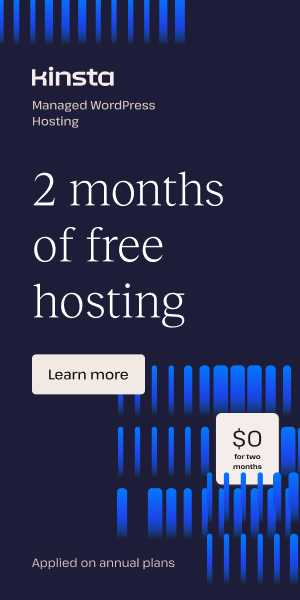Multilingual Sites: Figma Designs to WordPress
Optimizing Your Web Presence for a Global Audience
In today’s interconnected world, creating a website that speaks to diverse audiences is more than just a luxury — it’s a necessity. Whether you’re targeting customers in the USA, UK, Canada, or beyond, crafting a multilingual WordPress site ensures your message transcends language barriers effectively. The journey from a polished Figma design to a fully functional multilingual WordPress platform involves intricate planning and execution, especially when accommodating different languages, cultural nuances, and technical requirements.
Why Multilingual WordPress Matters
Multilingual WordPress (WP) websites empower businesses to engage users in their native languages, driving better user experience and higher conversion rates. According to recent studies, over half of internet users prefer browsing in their local language, making multilingual WP an essential strategy for expanding international reach.
WPML and Polylang remain the most popular translation plugins, enabling seamless language switching and content management that maintain website integrity and SEO rankings.
Starting with Figma: Designing for International Audiences
Figma is not just a fantastic design tool — it’s a collaborative powerhouse that simplifies complex workflows. Its cloud-based platform allows design teams to:
- Work simultaneously on projects, fostering agility and speed.
- Utilize prototyping features to preview interactive flows and multilingual elements.
- Easily manage and adapt layouts for various languages, including those with right-to-left (RTL) orientation like Arabic and Hebrew.
When designing for localization with Figma, it is crucial to plan for:
- Text Expansion: Different languages vary significantly in length, requiring flexibility in UI elements to prevent truncation or layout breakage.
- RTL Language Support: Ensure your components and typography can flip direction seamlessly.
- Cultural Sensitivity: Graphics and messaging should be tailored to the target demographic to avoid misinterpretations.
For example, you can leverage Figma’s components and frames to build modular, responsive structures that easily accommodate different languages’ peculiarities. Collaborating with translation experts within Figma itself using integrations like Bureau Works streamlines content localization workflows by allowing translation to be pulled directly back into design files, reducing errors and speeding up iteration.
Transforming Designs to Multilingual WordPress Sites
Shifting from a Figma prototype to a live multilingual WordPress site requires careful attention to both front-end and back-end integration. The Figma2WP Service offers a robust solution for this transformation by converting high-fidelity designs directly into WordPress themes optimized for multilingual use.
Key steps in this transformation include:
- Finalizing Responsive Figma Designs: Ensure your design is fully responsive, with well-structured layers and assets like SVGs and high-resolution images exported correctly.
- Using Efficient Export Tools and Plugins: Tools such as the Figma2WP plugin or Yotako’s Figma to WordPress plugin automate parts of the workflow. These plugins analyze your design to produce responsive WordPress code, though complex forms and interactions may require manual fine-tuning.
- Integrating Multilingual WordPress Plugins: Install and configure plugins like WPML or Polylang once your WordPress theme is ready to enable smooth language switching and translation management.
Following this approach, businesses have achieved notable results such as:
- A Canadian e-commerce platform expanded to French-speaking markets, leveraging bilingual product pages and seamless language toggles.
- A UK travel agency increased international bookings by catering to English, Spanish, and German audiences with localized content.
- An American nonprofit improved accessibility by localizing their site into three languages to better serve immigrant communities.
Top Translation Plugins and Their Benefits
Proper plugin choice is critical for the success of multilingual WordPress sites. Here are some indispensable tools:
- WPML: The industry standard plugin facilitating comprehensive translation management, compatibility with most themes and plugins, and SEO-friendly language URLs.
- Polylang: Offers a user-friendly interface and integrates well with popular page builders like Elementor and Gutenberg.
- Elementor: While not a translation plugin, its drag-and-drop builder complements multilingual sites perfectly, especially when combined with localization plugins.
- WooCommerce Multilingual: Essential for multilingual online stores powered by WooCommerce, enabling product translations and currency localization.
- TranslatePress: Provides front-end inline translation editing and supports complex sites with minimal impact on performance.
Choosing plugins that ensure SEO-friendly URLs, language-specific sitemaps, and easy translation workflows is essential for maintaining search engine visibility in multiple languages.
Case Studies: How Figma2WP Accelerates Multilingual Web Development
Figma2WP’s approach simplifies multilingual site creation by integrating design precision with WordPress flexibility:
- Canadian E-Commerce Success: By designing bilingual layouts with Figma and converting them through Figma2WP, the client achieved flawless user experience tailoring to French and English customers, including RTL support for specific languages.
- UK Travel Agency Expansion: The agency built multilingual booking interfaces supporting three languages, increasing international engagement with minimal coding effort thanks to Figma2WP’s robust conversion and localization foundation.
- American Nonprofit Outreach: By localizing the website into multiple languages with the help of Figma2WP, the organization could reach immigrant groups more effectively, bolstering site accessibility and community impact.
These examples highlight how integrating design and multilingual WordPress development reduces time-to-market, ensures consistency across languages, and provides a scalable solution for future growth.
Maintaining Quality and Flexibility Post-Launch
Launching a multilingual WordPress site is just the beginning. Key ongoing concerns include:
- Content Updates and Translation Management: Establish workflows between content creators, translators, and developers to keep all language versions in sync. Tools like WPML’s translation management help streamline this process.
- SEO Optimization: Use language-specific metadata, hreflang tags, and sitemaps to ensure each language version ranks appropriately on search engines.
- User Experience Refinements: Continuous testing on various devices and locales to maintain responsive layouts and fast loading times.
- Plugin and Theme Updates: Regularly update all components to maintain security and compatibility, especially when using multiple language plugins in conjunction with custom themes generated from Figma.
How to Get Started with Your Multilingual Project
Embarking on a multilingual WordPress project can feel overwhelming, but partnering with services dedicated to bridging design and WordPress functionality can save time and resource costs.
For tailored support transforming your Figma international design into a functioning WordPress site optimized for multiple languages, consider reaching out to the experts at the Figma2WP Service. Their experience in handling complex multilingual workflows ensures your project meets global standards while maintaining design integrity.
Ready to elevate your global web presence? Explore the possibilities today!
For more insights into modern website multilingual strategies, also check out resources from Smashing Magazine and MooSocial’s multilingual WordPress guide.
More From Our Blog
Enhancing Your Website with Dynamic Job Board Functionality In today’s competitive employment market, having a dedicated job board integrated directly into your website is a game-changer for businesses, recruiters, and career-focused platforms. For companies looking to provide seamless job listings and application processes, employing a reliable job board WP plugin is essential. Additionally, combining an Read more…
Maximizing Classified Ads Impact Through Modern Conversion Strategies In today’s digital marketplace, turning casual visitors into active users or buyers on classified ads sites requires more than just posting listings. Effective conversion rate optimization (CRO) is the secret weapon that many marketplace sites leverage to boost engagement and sales. Whether you are running a job Read more…


